Trouville-sur-Mer, Lower Normandy, suffers from a perceived lack of glamour because of its more famous neighbour, Deauville (known for its casino, conference centre and international star-studded film festival). But they have nothing to be ashamed of. Big and long white sandy beaches, beautiful mansions, great restaurants and also a big casino, Trouville is the prefect beachside resort..
But Trouville is first and foremost a fishing town with an active North Sea and Atlantic fishing fleet. The fishing area; docks, market and distribution have a big visual imprint on the town. The “La Touques” river flows into the sea, dividing Trouville from Deauville. The town itself, some 5,000 inhabitants, goes back to the middle ages.
The Beach
The Trouville-sur-Mer beach is the biggest tourist attraction for the town. In sharp contrast with Upper Normandy, where the beaches are made out of pebbles, Trouville is white sand, and lots of it.
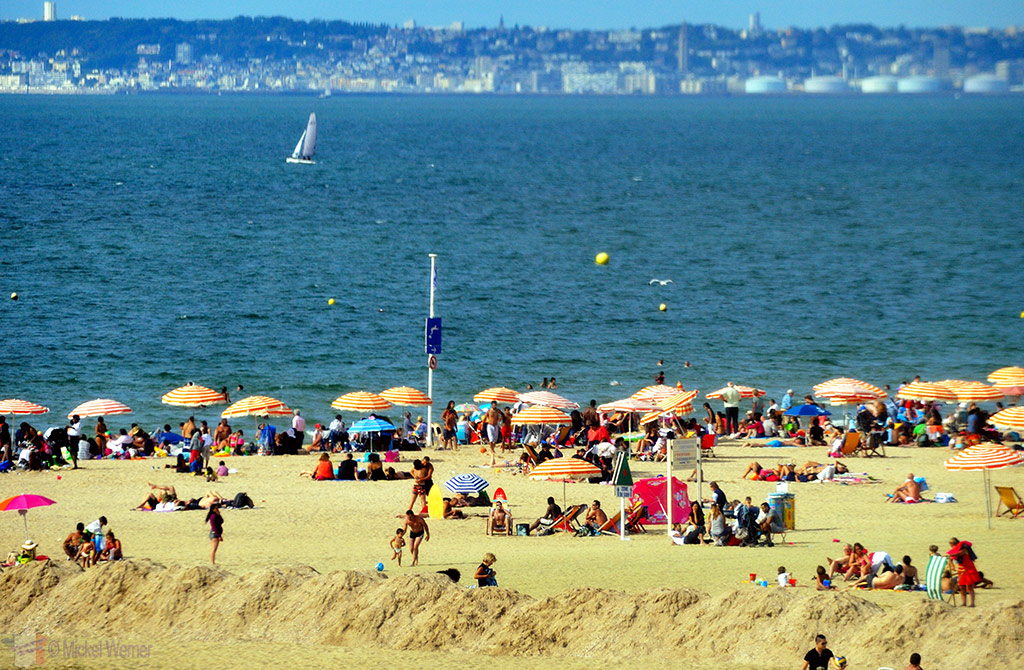
Note: On the other side of the water in the above photo you can see the city of Le Havre.
On the land side of the beach, there are many mansions lined up for its residents to go to the beach. Many, if not most, come from the Paris area.

Although most of the big mansions have been turned into apartments, but some are still in a family’s possession for generations.

On the busy beach, you will find the traditional promenade (made out of wood) and shops, changing & shower facilities, sun umbrellas rentals, etc

You can even find a tennis club on the beach:
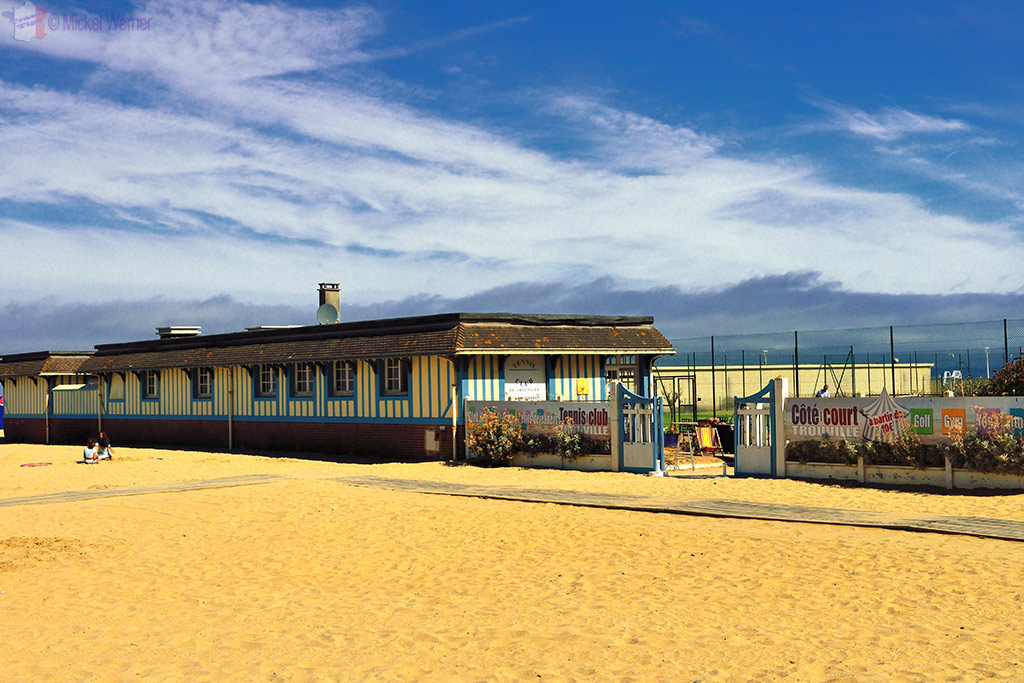
One of the last houses on the beach promenade (although the town goes on further), is a big building. Further inspection reveals that this used to be France’s most luxurious Hotel. Letters from famous people at the time, like Marcel Proust or Claude Monet, attest to this. The hotel was called “Hotel des Roches Noires” (the hotel of the black rocks) and was built in 1866.
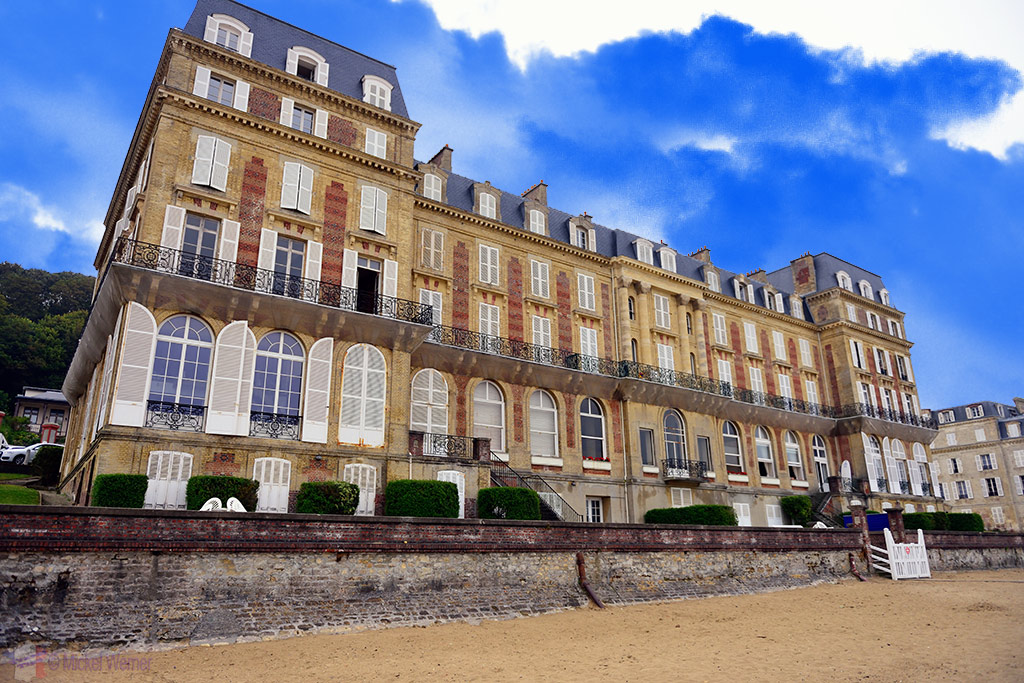
Now the hotel has been transformed into individual apartments. Next to the former hotel are some other nice mansions:
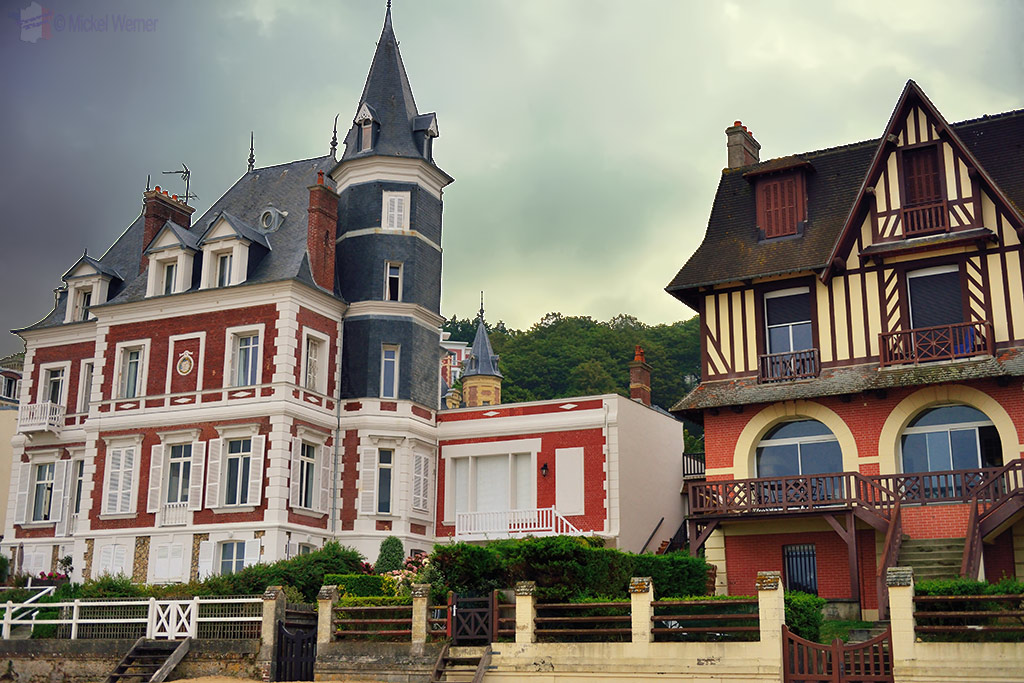
The promenade does not go all the way to the end of the beach, but the town does go on for a while alongside the beach:

At the end is a sailing club and some more mansions. At the other end, where the river leaves for the sea, is a new luxury hotel and spa building, built against the casino of Trouville:

Lighthouses of the Trouville/Deauville harbour entrance
The beach stops at the two lighthouses marking the entrance of the harbour:
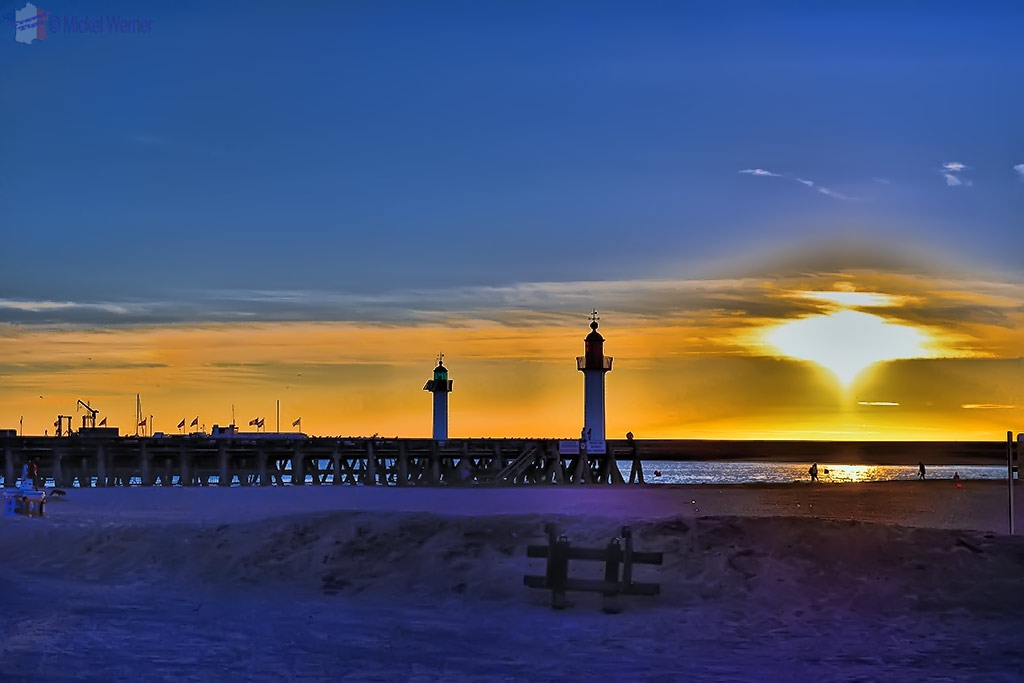
The red lighthouse (closest on the photo) measures 16 meters high, and was originally built in 1860 but was destroyed during WWII by the Germans. It was rebuilt identically after the war.
The red lighthouse is officially the Trouville lighthouse, the green one (measuring 15 meters) is the Deauville lighthouse. It was also destroyed during WWII.
The Town
The town itself is built on a tall hill, meaning you’ll be climbing a lot if you decide to visit it.
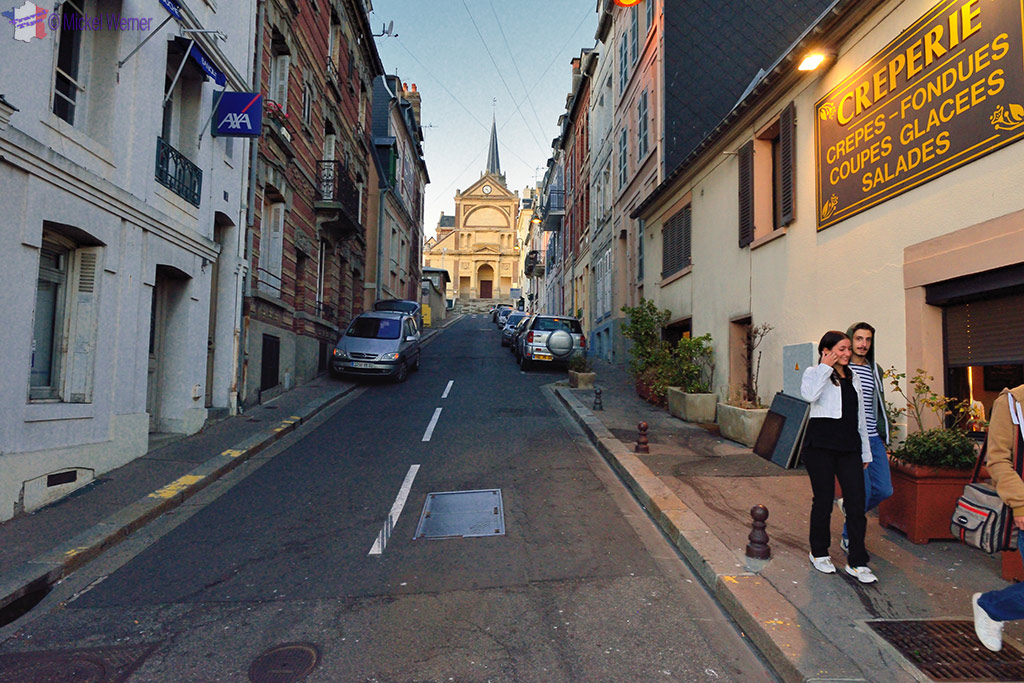
Although there is not much special to see in the upper town itself (apart from a church or two), some of the houses are stylish and imposing:

Some are modern but built to look like those built a few centuries ago. Most of the houses are well maintained and painted regularly.
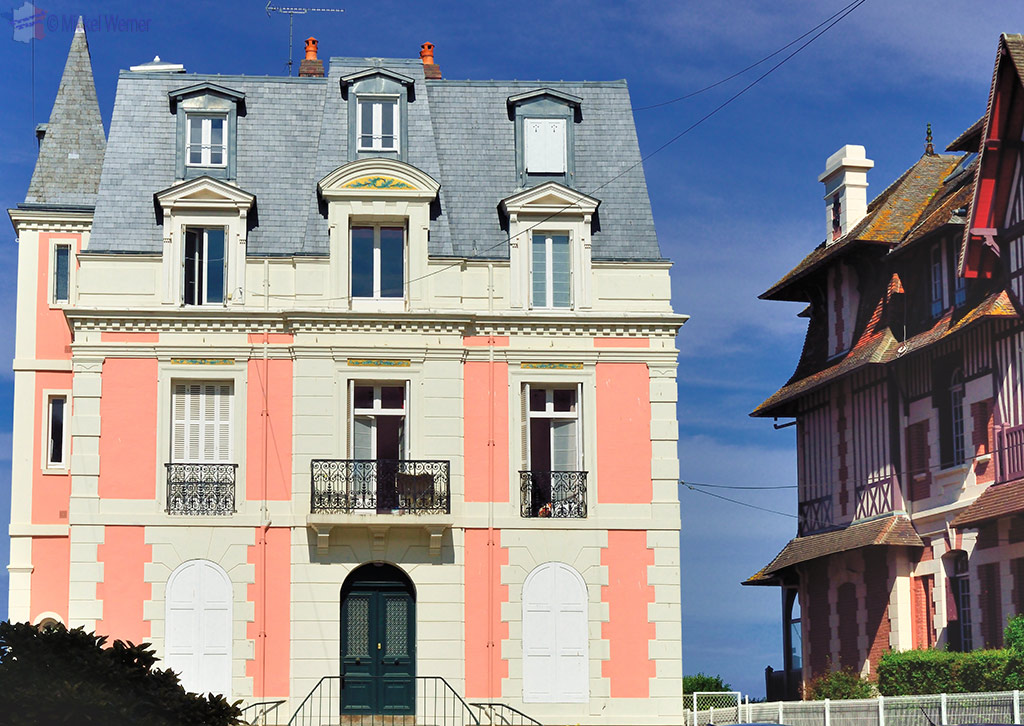
The main area of interest to tourists and visitors is the lower part where the La Touques river flows, and the many restaurants that are open day & night. But it’s not a shopping town. For that you’ll need to go to its neighbour Deauville.

The casino/restaurant is the biggest and most imposing building in the town, and is France’s 13th largest. The river dominates all views of the town, especially the lower part:

Alongside the river, on the other side of a busy road is where you will find the many restaurants. Most of them have a fish theme, for obvious reasons, but you can also eat food other than fish. But in the summer, the restaurants are packed, day and night. Most of them have long tables, and everyone needs to sit next to strangers.

The Harbour
The harbour at Trouville-sur-Mer is not big, but it’s very busy. The fishing fleet is active, and comes in often in the middle of the morning, and later in the afternoon. When the trawlers come in, it’s quite a spectacle since most are trailed by 100’s of seagulls looking for scraps.
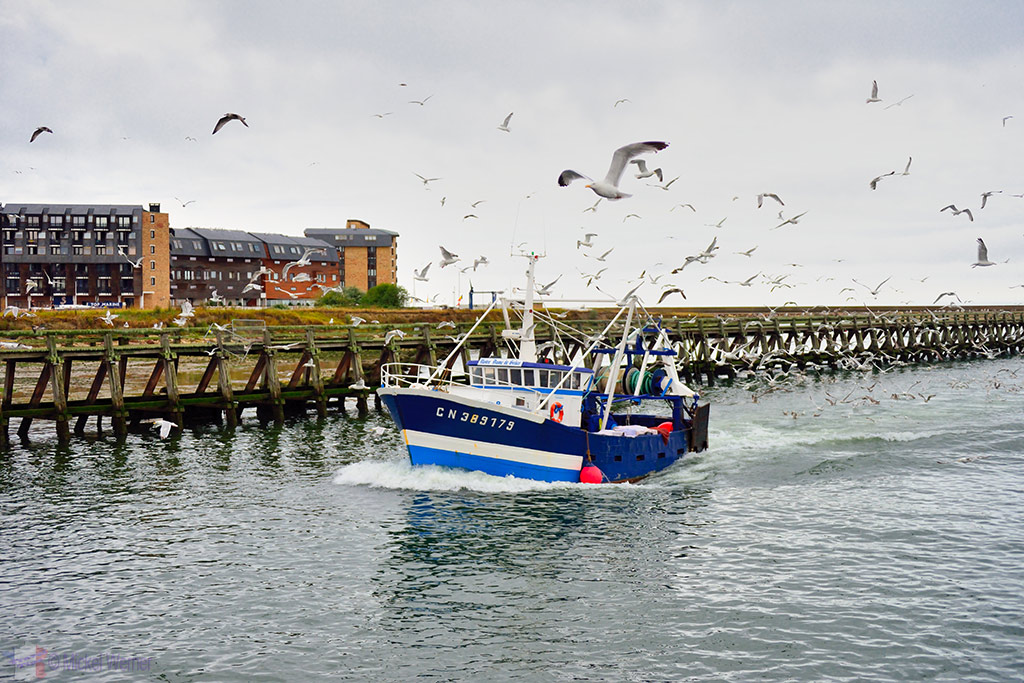
The trawlers head of the quai to offload their freshly caught fish. The majority of fish get placed into waiting trucks that take them to a central food market in Paris (Les Halles) where they are sold to distributors, supermarkets and restaurants.
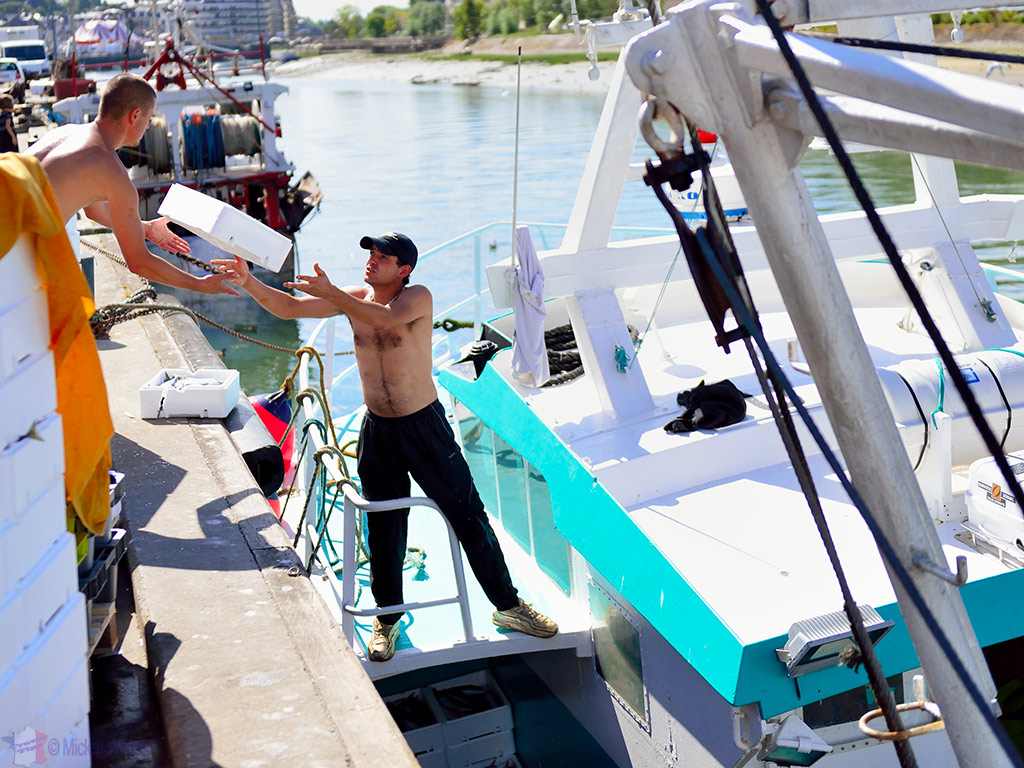
A portion of the fish and shellfish are brought into the imposing fish market building:
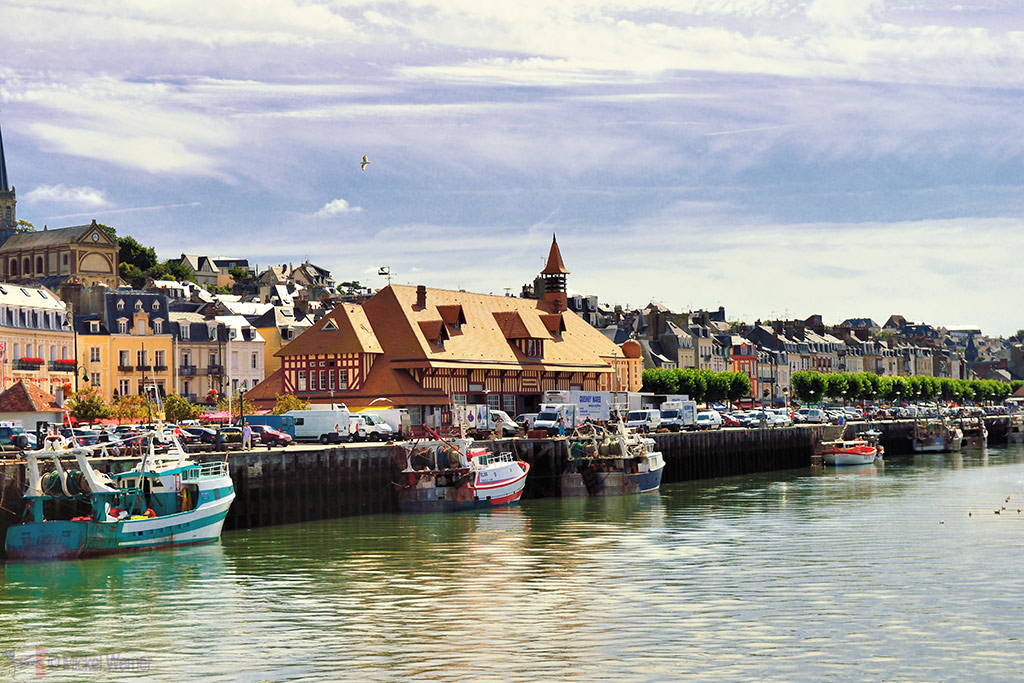
On the other side of the fish market building, not only can you buy the fresh fish and take it home to cook, you can also buy it and eat it on the spot. Each fishing boat has its own stall, and there the fishermen will cook the fish for you (to perfection), but don’t expect any other food; no vegetables, no starters, no deserts. Just homemade mayonnaise and wine. But the food is incredible; fresh, tasty and cooked to perfection.

But not only is the fish wonderful, it’s also a lot cheaper than in the restaurants on the main strip.
Anywhere you walk alongside the river, you are reminded that this is an active fishing town.
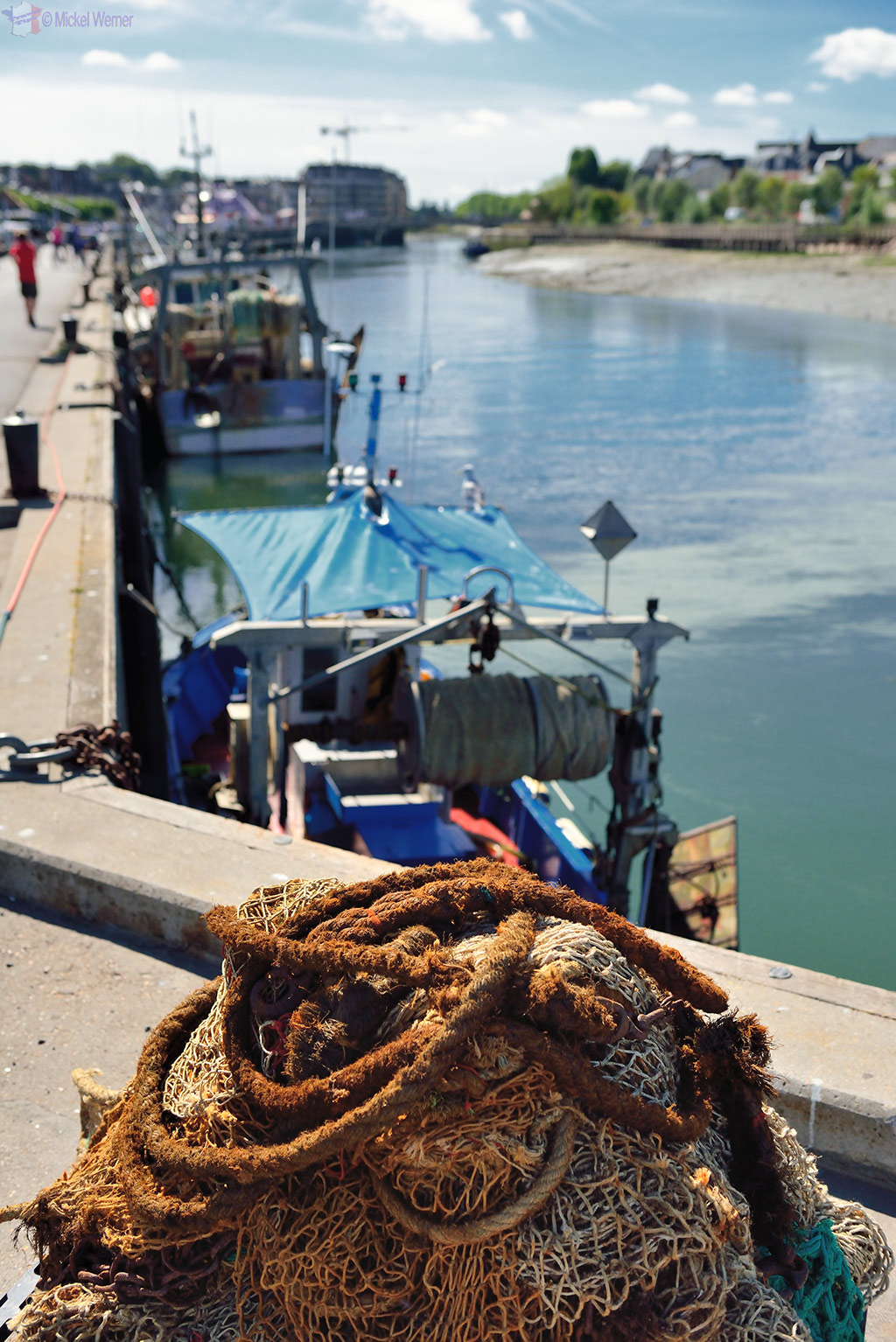
Summary
Trouville-sur-mer is a very nice beach resort, but it does get very busy (and warm) during the summer months. But the town has been built to deal with large crowds, with plenty of restaurants, ice cream vendors, and tourist activities.
There are plenty of hotels in different price ranges to choose from, and even a casino to try to earn back your money. But it’s biggest attraction is the enormous beach.
The Artists
Trouville-sur-Mer has been an in-spot for artists and wealthy patrons. Located next to Deauville and sharing the same railway station,many artists came here to work and mingle with the high-societe folks.
Here is a list of artists who working in Trouville (a link “⇠” to that artist’s works will appear when published). An “*” after an artist’s name means that the artist did not work in Trouville itself, but in a nearby town.
- 🇫🇷 Binet, George ⇠
- 🇺🇸 Boggs, Frank Myers ⇠
- 🇬🇧 Bonington, Richard Parkes ⇠
- 🇫🇷 Boudin, Eugene-Louis ⇠
- 🇬🇧 Boys, Thomas Shotter ⇠
- 🇫🇷 Bruelle, Gaston ⇠
- 🇫🇷 Caillebotte, Gustave ⇠
- 🇺🇸 Chapman, Conrad Wise ⇠
- 🇫🇷 Chapuis, Pierre ⇠
- 🇫🇷 Ciceri, Eugene ⇠
- 🇫🇷 Courbet, Gustave ⇠
- 🇫🇷 Daubigny, Charles-Francois ⇠
- 🇫🇷 Dubourg, Louis-Alexandre ⇠
- 🇫🇷 Dufy, Raoul ⇠
- 🇫🇷 Gernez, Paul-Elie ⇠
- 🇫🇷 Guerard, Henri * ⇠
- 🇫🇷 Hervier, Louis Adolphe ⇠
- 🇫🇷 Huet, Paul ⇠
- 🇳🇱 Jongkind, Johan ⇠
- 🇫🇷 Lebourg, Albert ⇠
- 🇫🇷 Lepine, Stanislas ⇠
- 🇫🇷 Letellier, Emile-Andre ⇠
- 🇫🇷 Loir, Luigi ⇠
- 🇫🇷 Monet, Claude ⇠
- 🇫🇷 Mozin, Charles Louis ⇠
- 🇫🇷 Noel, Jules Achille ⇠
- 🇫🇷 Pecrus, Charles Francois ⇠
- 🇫🇷 Petitjean, Edmond Marie ⇠
- 🇫🇷 Renoir, Pierre-Auguste ⇠
- 🇫🇷 Signac, Paul ⇠
- 🇳🇴 Thaulow, Fritz * ⇠
- 🇫🇷 Truffaut, Fernand-Fortune ⇠
Related Posts
- 10000
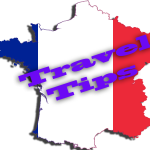 Transport Getting There Train: There is a train link between Paris and the shared railway station of Trouville-sur-Mer and Deauville. There are several daily direct (and ones where you need to change) trains. Fastest time is 2 hours. Trouville-sur-Mer/Deauville railway station Ferry: Closest ferry harbours from the UK are Ouistreham…
Transport Getting There Train: There is a train link between Paris and the shared railway station of Trouville-sur-Mer and Deauville. There are several daily direct (and ones where you need to change) trains. Fastest time is 2 hours. Trouville-sur-Mer/Deauville railway station Ferry: Closest ferry harbours from the UK are Ouistreham… - 10000
- 10000
 Deauville in Normandy is often considered the 21st district of Paris due to the large number of Parisians who have their weekend home there. Driving through any town in Normandy compared to driving through Deauville is the difference between day and night; average income places versus rich incomes, and it shows.…
Deauville in Normandy is often considered the 21st district of Paris due to the large number of Parisians who have their weekend home there. Driving through any town in Normandy compared to driving through Deauville is the difference between day and night; average income places versus rich incomes, and it shows.… - 62
 Transport Getting There Train. There is a train link between Paris and the shared railway station of Trouville-sur-Mer and Deauville. There are several daily direct (and ones where you need to change) trains. Fastest time is 2 hours. Trouville-sur-Mer/Deauville railway station Ferry: Closest ferry harbours from the UK are Ouistreham…
Transport Getting There Train. There is a train link between Paris and the shared railway station of Trouville-sur-Mer and Deauville. There are several daily direct (and ones where you need to change) trains. Fastest time is 2 hours. Trouville-sur-Mer/Deauville railway station Ferry: Closest ferry harbours from the UK are Ouistreham…

